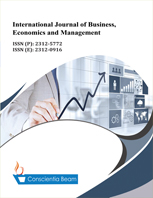Inequality in the appropriation of wealth generated between the richest and poorest municipalities in Brazil between 1999 and 2020
DOI:
https://doi.org/10.18488/62.v11i2.3744Abstract
This research aimed to show the evolution of the Gross Domestic Product (GDP) per capita of the poorest Brazilian municipalities, in relation to that observed in the country's richest municipalities in the period 1999-2020. The data used were: total GDPs; GDP per capita; and agricultural GDP. The data source was the Brazilian Institute of Geography and Statistics (IBGE). We indexed all values for 2020 using the General Price Index (GPI) of the Getúlio Vargas Foundation. Brazil's 5,570 municipalities were ranked in ascending order using annual GDP per capita, and organized into deciles. We selected the first decile, which included the 557 municipalities with the lowest GDP per capita, and the last decile, which included the 557 municipalities with the highest GDP per capita, for comparison purposes. We evaluated the evolution of the per capita GDP/total GDP ratio in these deciles. Geometric Growth Rates (GGR) were estimated in order to gauge the trends observed in these ratios between 1999-2020. The evidence showed that the magnitudes of GDP per capita observed in the tenth and first deciles are quite unequal. However, the study also showed that there was a small reduction in the evolution of the GDP per capita/total GDP between 1999-2020, which suggests a small reduction in inequality in the appropriation of wealth generated in Brazil over the period evaluated. It was also observed that in the richest deciles, the agricultural GDP/total GDP ratio was lower than that observed in the poorest deciles.

